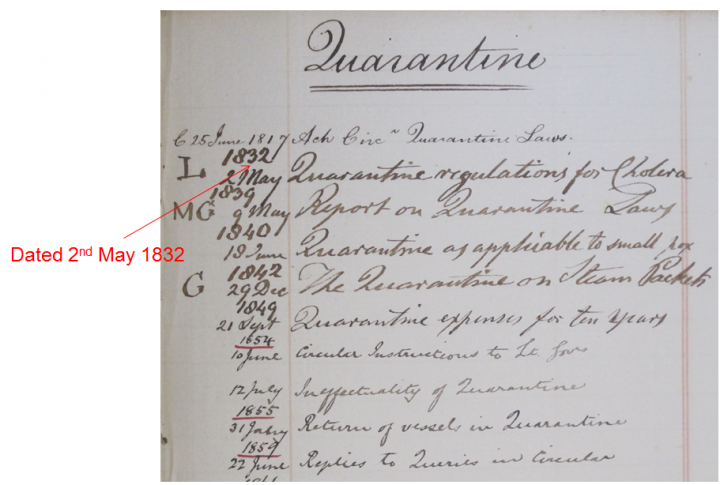How to look for records of... Colonies and dependencies 1815-1870: using Colonial Office indexes to locate correspondence
How can I view the records covered in this guide?
How many are online?
- None
1. Why use this guide?
Use this guide for advice on how to search for Colonial Office correspondence dating from 1815 to 1870 and now held at The National Archives. Colonial Office correspondence is an invaluable resource for studies of the history of the British Empire and the individual countries which were once British colonies.
You can search for references to the correspondence on our online catalogue but you will need to visit us to view the documents themselves. Another way to find correspondence from this period is to use the original Colonial Office registers, one set covering 1820 to 1850 and another for 1850 to 1926.
For an introduction to the Colonial Office and advice on other types of Colonial Office records see our guide to records of Colonies and dependencies from 1782.
2. What are the indexes and why are they worth using?
For the period between 1815 and 1870, Colonial Office clerks provided an index to the original correspondence received by the Office. They listed incoming correspondence by subject keyword, giving brief details of the content. For example, all the individual items of correspondence on gold mining in the colony of Victoria might be found under the heading ‘gold’ or ‘mining’ in the Victoria index. They can therefore be used as a means of locating material on a particular topic in correspondence which has not been recorded in our catalogue in detail.
The Colonial Office indexes can be a very useful research tool and they can enable you to locate quickly items on a specific topic over time, but they should be used with caution because:
- The clerks had to decide on which keyword to use. It may be that the correspondence contains information on other topics which are not indicated by the keyword.
- All the correspondence is not necessarily indexed. It appears that only correspondence received from colonial governors was included, but not that received from private individuals or organisation.
- Terminology has changed over the years. For example, ‘indigenous people’ may be ‘natives’ in the index. Be aware of the contemporary usage.
3. Indexes versus registers
As well as using the indexes to find correspondence from this period, you can use the original Colonial Office registers. The registers cover correspondence from 1820 to 1926.
While the indexes conveniently group together details of correspondence (date and brief summary) by topic, providing a very quick method of identifying the relevant correspondence, the registers are a more complete record of the correspondence received, listing the incoming correspondence in order of date sent and recording brief details of content. After 1850, the registers also, usefully, record details of the previous and next related item of correspondence.
4. How to use the indexes
All the indexes have been stored in series CO 714 and there are separate indexes for each colony.
Step 1: Find the relevant index
To find the relevant index, use the advanced search on the catalogue to search CO 714 by name of colony and date range.
For example, suppose that we are interested in quarantines in Barbados between 1830 and 1870, when there were outbreaks of cholera across much of the world. Conduct the following search:
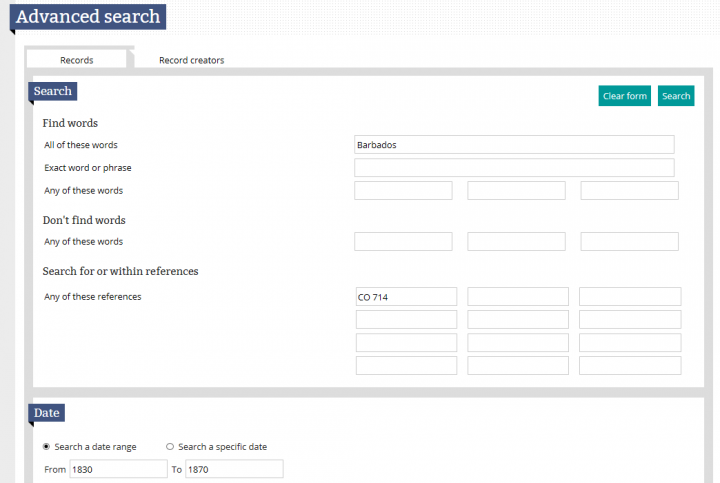
The advanced search page in our catalogue.
Arrange the results in reference order by using the ‘Sorted by’ box to give the following:
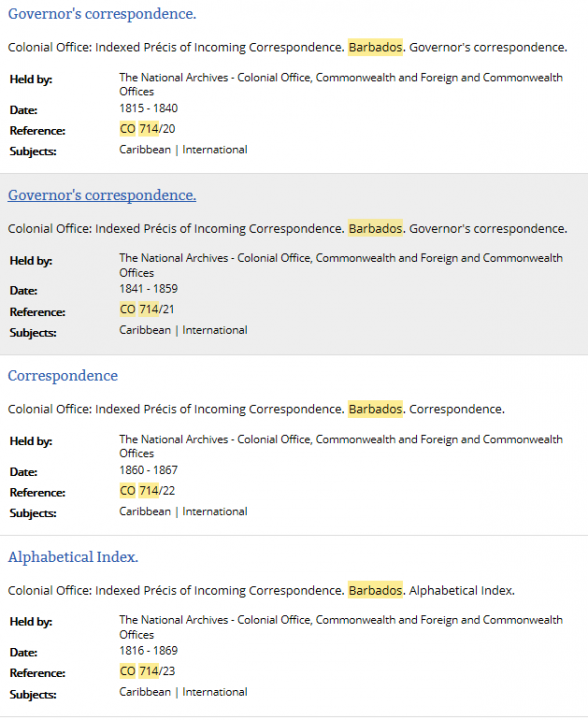
Catalogue search results ordered by reference.
All the volumes are described as ‘Indexed Précis of Incoming Correspondence’, but three are named ‘Governor’s correspondence’ or ‘Correspondence, while piece CO 714/23 is described as an ‘Alphabetical index’. There is some variation in the way these indexes are described on the catalogue, but they contain the same kind of information.
Order volume CO 714/23, the ‘Alphabetical index’. If we look under ‘Q’ for quarantine we find the following page:
We see that there is listed (among other items) an item of correspondence dated 2 May 1832, which concerns ‘Quarantine regulations for cholera’. We already have enough information from this to locate the correct volume of original correspondence: the colony, year and the sender (the Governor).
If we examine the ‘Governor’s correspondence’ index which covers 1832, volume CO 714/20, we find the following page:
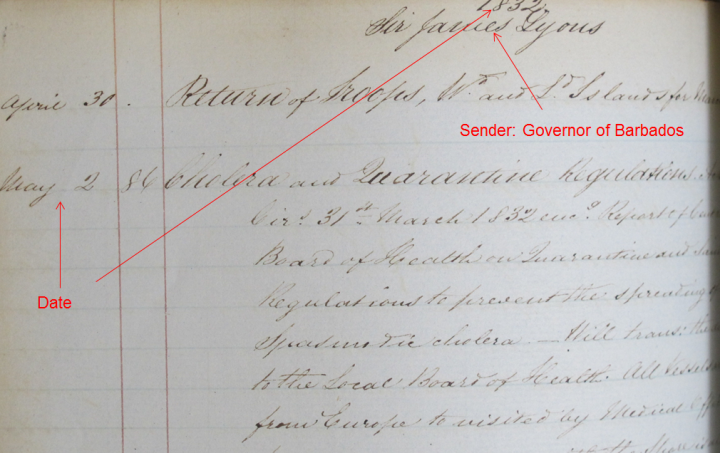
A page from the Governor’s correspondence index from 1832. Document reference CO 714/20.
The entry gives further details about the content of the correspondence, but we do not need it to locate the item in the original correspondence series.
Step 2: Locating the volume of original correspondence
You can find out the Colonial Office original correspondence series for any colony by using the advanced search on our catalogue and searching with the name of the colony, the phrase ‘original correspondence’ and the relevant year.
The original correspondence series for Barbados is CO 28. You can now locate the relevant volume in CO 28 for the year 1832 with this search:
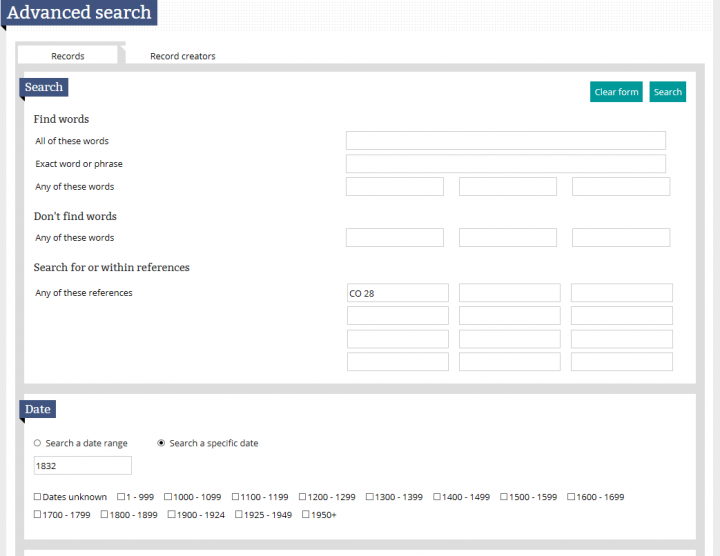
The advanced search page in our catalogue. This is a search for correspondence from 1832 held in CO 28, the series for Colonial Office correspondence form Barbados.
Put the search results in reference order by using the pull-down menu in the ‘Sorted by’ box:
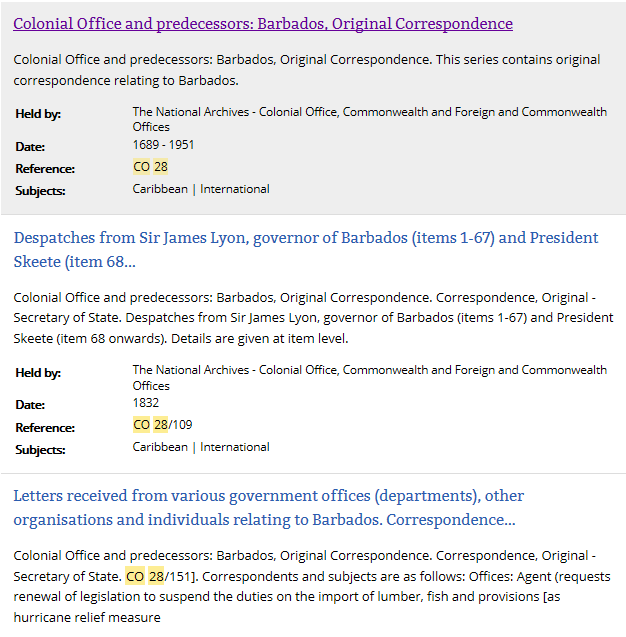
Catalogue search results ordered by reference.
We would expect find the item on quarantine to be in volume CO 28/109, which contains correspondence from the Governor of Barbados, Sir James Lyon, for 1832.
In fact, this volume has been catalogued in detail (this is not usually the case) and we can confirm, by scrolling down several pages to the date 2 May 1832, that the item we need is at CO 28/109/41:

The catalogue description for correspondence sent from Barbados on May 2 1832. Document reference CO 28/109/41.
